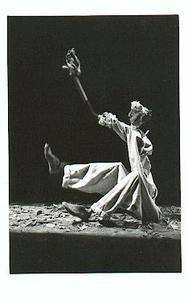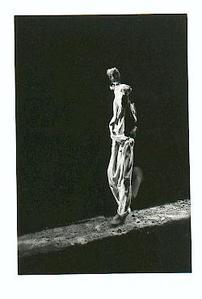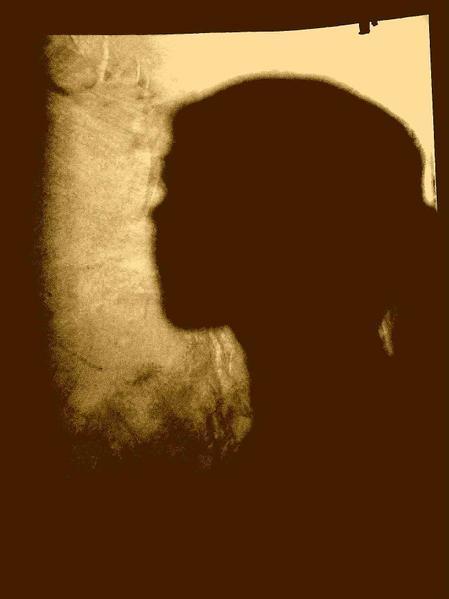LES
 ATELIERS
DE GRUNDTVIG -
ATELIERS
DE GRUNDTVIG -
MOBILITÉ D'APPRENANTS ADULTES
Les Ateliers de Grundtvig est une des nouvelles actions dans le programme de Grundtvig qui ont été lancées en 2009. L'objectif de cette action est de permettre aux apprenants adultes de participer à des Ateliers (des groupes de travail et des séminaires d'apprentissage) ayant lieu dans un autre pays européen participant au Programme pour l'Education et la Formation tout au long de la Vie. Il s'agit d'une forme de mobilité offerte aux apprenants adultes dans le cadre du Programme de formation permanente. Les Ateliers Grundtvig rassemblent des personnes ou de petits groupes d'apprenants adultes de plusieurs pays pour une expérience d'apprentissage multinationale, appropriée à leurs besoins de développement et d'apprentissage personnels. Un minimum de 10 et un maximum de 20 apprenants des pays autres que le pays dans lequel l'Atelier est organisé, peuvent être financés. Les Ateliers dureront un minimum de 5 jours (à l'exclusion du voyage) et maximum 10 jours et ils auront lieu entre 1er septembre 2012 et 31 août 2013. L'organisateur d'un Atelier est responsable d'organiser cet Atelier, sa publicité, le recrutement des apprenants, leur voyage et leur logement pension.
PROFIL DES APPRENANTS
L'action est ouverte à tout citoyen adulte. Néanmoins, une attention particulière sera accordée aux candidats appartenant à des groupes sociaux vulnérables et/ou marginalisés. Les personnes âgées et/ou les personnes ayant quitté l'école sans avoir acquis les qualifications de base seront particulièrement prises en compte, afin de leur offrir des activités alternatives d'éducation pour adultes. L'action est ouverte à tout citoyen adulte qui est un ressortissant de ou résident de manière permanente (ou enregistré comme réfugié ou demandeur d'asile) dans l'un des 4 pays participant au Programme, à savoir : les 27 États membres de l'Union européenne, l'Islande, le Liechtenstein, la Norvège, la Suisse (pays AELE-EEE), la Croatie et la Turquie (pays candidats). Les participants doivent venir d'au moins trois différents pays participants, en plus du pays d'accueil, et pas plus de 1/3 des participants devraient venir du même pays. Les ressortissants du pays où l'Atelier a lieu sont éligibles pour participer à l'Atelier mais ne peuvent pas être financés par Grundtvig.
COMMENT S'INSCRIRE
SI vous souhaitez vous inscrire afin de participer à un Atelier de Grundtvig, veuillez procéder
comme suit :
D'abord choisissez un Atelier qui vous intéresse ;
Ensuite mettez-vous en contact avec l'organisateur de l'Atelier qui vous fournira un formulaire d'inscription. Les coordonnées de l'organisateur de l'Atelier se trouvent sur la page de description de l'Atelier. Puis, soumettez ce formulaire d'inscription pour apprenant, dûment rempli et signé, à l'organisateur de l'Atelier;
Si vous avez été sélectionné, veuillez envoyer, après votre participation à l'Atelier, une copie de votre rapport d'évaluation, à l'Agence Nationale de Grundtvig dans votre pays. Les adresses des Agences Nationales sont disponibles sur la page web suivante: http://ec.europa.eu/education/programmes/llp/national_en.html
Le personnel de Grundtvig dans les Agences Nationales est à votre disposition pour vous assister avec des conseils et pour aider à vous orienter s'il y a lieu.
BONNE CHANCE !
ABOUT THE GRUNDTVIG WORKSHOPS - LEARNER MOBILITY
Grundtvig Workshops are one of the new actions in the Grundtvig Programme which have been launched in 2009. The objective of this action is to enable adult learners to participate in Workshops (learning events and seminars) taking place in another European country participating in the Lifelong Learning Programme. This is a form of individual
mobility offered to adult learners in the Lifelong Learning Programme. The Grundtvig Workshops bring together individuals o
PROFILE OF THE LEARNERS
The Workshops are open to any adult citizen; however, particular attention is given to including people from vulnerable social groups and in marginal contexts, in particular older people and those who have left education without basic qualifications, in order to give these disadvantaged social groups alternative opportunities to access adult education. The action is open to any adult person who is a national of or permanently residing (or registered as refugee or asylum-seeker) in one of the Programme countries, namely: the 27 Member States of the European 2 Union, Iceland, Liechtenstein, Norway, Switzerland (EFTA-EEA countries), Croatia and Turkey (candidate countries). Participants must come from at least three different participating countries, in addition to the host country, and no more than 1/3 of the participants should originate from the same country. Nationals of the country where the Workshop takes place are eligible to participate in the Workshop but cannot be funded through Grundtvig.
HOW TO APPLY
If you wish to apply to participate in a Grundtvig Workshop, please proceed as follows:
First select a Workshop you are interested in;
You will find how to contact the Workshop Organiser on the description page of the Workshop. The Workshop Organiser will provide you a learner application form, which you must duly completed and signed send back to the Workshop Organiser;
If you have been selected, please send after your participation in the Workshop, a copy of your final evaluation report to the Grundtvig National Agency in your country. The addresses of National Agencies are available on the following web page: http://ec.europa.eu/education/programmes/llp/national_en.html
The Grundtvig staff of the National Agencies will be happy to provide you with advice and guidance if needed.
GOOD LUCK!
Workshop
Venue: BEUVRY Date of the Workshop: 16/04/2013 - 23/04/2013
Subject area: La Marionnette au service des hommes
Working language(s): FR
Target Group + Translation:
Personnes intéressées (non marionnettistes professionnels) personnellement et/ou dans le cadre de leur activité professionnelle par la pratique de la Marionnette. Elles sont confrontées à des publics exclus et/ou en difficultés (handicaps, prison, exclusion sociale…) dans le cadre de leur cellule familiale ou de leur pratique professionnelle et veulent découvrir comment notre pratique artistique participe à apaiser les conflits. En apprenant à construire, manipuler une marionnette, interpréter un personnage elles veulent se doter de nouveaux outils, retrouver les chemins de l'échange, réduire les différences et/ou difficultés.
People interested (not professional puppeteers) personally and / or in the field of their professional activity, by object manipulation and puppetry. They are working with people in social exclusion (jail, handicap, unemployment) or dealing with these kind of situations in their family or neighborhood. They would be interested in knowing how an artistic process can become a tool to pacify people and overcome conflicts. By learning how to create, manipulate and play a character, they will discover new tools, new way to communicate and way to decrease differences/difficulties of language.
Main activities Programme + Programme translation:
Découvrir une technique artistique et marionnettique (construction manipulation et interprétation de personnage) qui, dépassant les différences, les transcendent. De la construction de sa marionnette à la découverte des techniques de manipulation, jusqu'à la présentation finale du travail réalisé l'apprenant découvrira les outils techniques et artistiques que nous utilisons et leur capacité à faciliter les échanges avec l'autre. En nous appuyant sur les expériences que nous menons auprès de publics en situation d'exclusion (Prison, Handicap, Publics défavorisés) nous amènerons les apprenants à découvrir comment la pratique artistique peut être mise au service d'un projet sensible à destination de publics particuliers et peut devenir un outil privilégié de dialogue.
• MODULE / CONSTRUIRE (imaginer) La marionnette est un objet intermédiaire vers lequel se déplace le regard. Les participants découvriront dans ce module comment aborder la construction d'un objet
personnel. A partir d'une base technique imposée (sculpture en volume), chaque participant
construira le personnage qui deviendra objet et acteur du dialogue. En accompagnant les participants nous leur ferons dépasser les difficultés inhérentes à la sculpture en volume. De la
sculpture à l'habillage chacun des participants construira une marionnette à gaine qui devenant son reflet et sa parole l'accompagnera lors de son retour en son milieu.
• MODULE / MANIPULER (prendre de la distance) L'objet construit n'est rien sans le manipulateur. Chaque objet a sa respiration, son rythme, sa rapidité, son langage. A partir de l'objet construit, les participants seront amenés à découvrir les fondements de la manipulation. Ils chercheront dans leur approche à transférer à leur personnage le souffle de vie qui anime. Dans ce module, lentement nous chercherons à faire paraître un « double marionnette », objet ami de l'apprenant. Dans le cadre de ce module, nous amènerons les apprenants à découvrir comment l'objet transporte les émotions et volontés du manipulateur. Entre technique et sensibilité l'objet colporte une humanité à échelle réduite, celle que le manipulateur décide de donner à son objet.
• MODULE / INTERPRETER (reformuler) ou LA PAROLE DE LA MARIONNETTE EST-ELLE PLUS FIABLE QUE CELLE DE L'HOMME ? Dans ce troisième temps nous chercherons comme dans « le deuxième souffle sportif » à amener le manipulant à s'oublier derrière l'objet ; nous chercherons à pousser les apprenants à dépasser leur langue et à trouver dans celle de l'objet une parole plus universelle ; qu'elle soit parlée ou pas. Chaque marionnette construite aura un caractère, une couleur, une interprétation. Dans ce module et avant de le confronter au regard et à l'oreille du public feront apparaître leur double (ami/ennemi) et les questions qu'il portera. Pleine d'humanité ou véritable cauchemar la marionnette deviendra, poétique ou matérialiste, la petite de voix de « l'autre en soi ».
• Clôture en RE(s) TITUTION(s). De ces modules, sortiront des RE(s)TITUTION(s) qui seront présentés au public. Ce temps de RE(s)TITUTION(s) permettra de valoriser le travail accompli par chacun et donnera à comprendre comment la marionnette « agit ».
From construction of its own puppet and discovery of manipulation techniques, until the final
showing, the learner will discover our artistic and technical process. We will show the way we use them as communication tools. Using our experience with people in great social difficulties (jail, handicap...) will lead the learners to understand how an artistic process can be put to service a sensible project targeting particular publics.
UNIT Build / Imagine. A
UNIT manipulate - Take distance. A puppet is nothing without his puppet master. Each object has its own breathing, rhythm, speed, language. From the construct object, the participants will be led to discover the roots of object manipulation. They will be in search of insufflate a breath of life. In this unit, slowly we'll search to make appear the "dual puppet" friend object of the learner. We will lead people to see how an object can become the vehicle of emotions and wills of the puppeteer. Between technicity and sensibility, the object brings a reduced humanity, the one the manipulator decides to give.
UNIT - Play /Rephrase or Is the puppet talk weaker than the man's one? At this third stage we will ask the manipulator to forget himself behind the object. We will search to push the participant to pass over his own language in order to find in the object's one in a more universal language (talked or not). Each puppet will have a character, a color, a behavior. In this unit, before confronting the work to the look and ear of the public they will make appear their double ( friend/enemy) and the questioning it will bring with him .Full of humanity or real nightmare the puppet will become poetic or materialistic, the tiny little voice of the other one. End - Re - Turns From these units will go out Re - Turns and they will be presented to the public. This Re-Turns period will allow to valorize the accomplished work by each one of the participants and will make the puppet acting understandable.
Workshop Organiser: Ass. Les Mille et une Vies
Contact details: 26/2 Bd de Metz BP 70342 59020 LILLE - FR-FRANCE
Tel.: 03 20 88 44 78 ou 09 65 36 94 75
Fax: 03 20 88 45 69
E-mail: lesmilleetunevies(at)wanadoo.fr
http://www.marionnettesenprison.com

